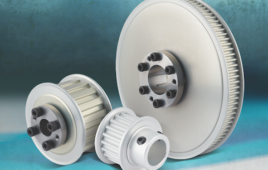
Collier Aerospace Corporation’s new HyperX analysis and sizing optimization software was used successfully to design a unique composite racing sailboat, called the Sea Rocket, for the SP80 team.
The innovative kite-powered trimaran, called the Sea Rocket, was constructed by a Swiss team of young engineers and sailing enthusiasts, aided by students at École Polytechnique Fédérale de Lausanne (EPFL). In 2023, this crew, known as the SP80 team, will attempt to break the world sailing speed record by reaching 80 knots off the coast of France. To make this a reality, the SP80 team contacted Collier Aerospace Corp. The company used its new HyperX analysis and sizing optimization software to help the team design the unique composite racing sailboat they’ll need to make history next year.
“The SP80 team was impressed with the new HyperX software and the engineering expertise that we received from Collier Aerospace,” said Xavier Lepercq, SP80 co-founder and technical manager. “The HyperX software was able to size an extremely complex structure and evaluate several different load cases very quickly. We relied on Collier Aerospace’s engineering judgment and experience to help us make smart decisions. We look forward to collaborating with the Collier Aerospace team on future structural projects.”
Sizing optimization for a sea rocket
Using HyperX software, Collier Aerospace provided composite optimization for most of the primary rigid structures on the craft, including the main hull, the power module, and the back floats. Sizing involved determining the thinnest, lightest laminates and sandwich core material that met the mechanical requirements in each section of the boat while maintaining positive safety margins.
Additionally, HyperX software was used for various other purposes on the SP80 team’s boat. These included trade studies for numerous laminate and sandwich panel combinations as well as structural optimization for manufacturability by defining fabrication and laydown sequences using the thin-ply carbon fiber-reinforced laminates. The assessment of different structural design concepts was followed by rapid sizing of the newly generated structures, including static stress and buckling analyses — often as parts were being fabricated. The model generated in HyperX software contains 300,000 elements and over 500 unique design properties.
“A complex project like this composite sailboat is where HyperX software really shines,” said Mischa Pollack, Director of Innovation for Collier Aerospace. “It can size a structure much faster than other tools. This speed allowed us to evaluate many different design concepts for the various chassis components, particularly the power module. This type of project is one of my favorite things about Collier Aerospace — working with great teams like the SP80 group while helping HyperX become a better tool for the future.”
Unique structure
Competitors attempting to break the World Sailing Speed Record had substantial latitude when designing their craft, which led and inspired the SP80 team to use a trimaran architecture comprised of four key elements. Three carbon fiber-reinforced composite hulls (the main hull/passenger compartment, which protects the pilot and copilot, and two side floats, which provide stability at both low and high speeds) are designed to always stay in contact with the water. Super-ventilated hydrofoils reduce cavitation and drag, thus helping the pilot use all available power to propel the boat forward. A kite (sail) is then tethered to the main hydrofoil and transforms wind power into a propulsive force to move the boat.
Several different kites with surface areas ranging from 25 to 40 square meters can be used to adjust to wind conditions. The patented and all-important composite power module is a mechanical system that constantly aligns the kite’s ascending force with the hydrofoils’ descending force, efficiently transmitting wind forces from the kite to the hydrofoils and the boat itself while maintaining high-speed stability. Together, these four elements were designed to increase speed and minimize drag in both air and water to aid the team in succeeding with its record-breaking attempt.
Collier Aerospace
collieraerospace.com
Filed Under: Uncategorized




